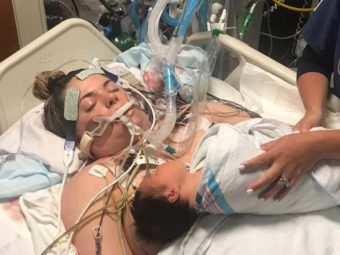
Image: iStock
Easy birthing! This is what you hope for throughout your nine months of pregnancy. The type place of birthing is a personal choice. But it is important to know the various options you have, to make an informed decision.
You need to consider your medical history, the ability to give birth without medication, the insurance covers and whether you have a high-risk pregnancy. Your decision might also be based on whether or not you are in the vicinity of a hospital. These and other variables could help you choose one of the following options:
1. Hospital birth
Most urban women these days prefer giving birth in a hospital because they regard it as the safest place for birthing. A hospital gives the assurance that there are experts, medical crew, and latest technology available for timely help. Even if you have a low-risk pregnancy, you still might want to opt for a hospital birth. Moreover, several corporate hospitals provide you with the comfort of luxurious rooms.
Pros:
- Medical staff and equipment will be accessible in case of an emergency.
- If you have a good suite, overnight stay and rest can be pretty good.
- NICUs are accessible in case there is something wrong with the newborn.
- Insurance coverage is usually there for hospital births.
Cons:
- Hospitals might have restrictions on the birth positions.
- You should travel to the hospital in time.
- The ambiance would not be like home unless you have can afford an expensive suite.
- There will be limited privacy, more movement of the medical crew in and out of your room not only during delivery but also when you need to rest.
- You can have an unnecessary C-section.
- Your baby might have to go through avoidable tests.
- You might not like the food at the hospital.
Hospital accommodation may vary based on your finances and requirements:
2. Traditional hospital birth
Some hospitals have you moving from one room to another depending on the stage of labor. You may be restricted to one room until you are through with labor and delivery and then moved to another room for recovery. In the meanwhile, your baby might be brought to your room for nursing but is put in its nursery for rest of the time. Enquire at your hospital as to what practices they follow.
3. Family-centered care
Some hospitals will allow for labor, delivery, and recovery to happen in the same room while your partner can also stay with you. Your baby also gets to stay with you in the same room after birth. These rooms have a good ambience with soothing colors, decorative pictures on the walls and cabinets to store medical equipment when not in use.
4. In-hospital birthing center
Such centers are located either in a hospital or adjacent to a hospital. They provide for natural birthing in a home-like setting. It also means that the medical crew and the necessary medical equipment will be available since they are in the vicinity, should there be a problem during labor.
5. Standalone birth centers
- Standalone birth centers have a certified nurse or a certified midwife to deliver your baby.
- These birth centers are affiliated to a local hospital where you can be shifted in case a problem occurs during delivery.
- Standalone birthing centers could offer parenting classes, lactation support, and might have insurance coverage.
- Standalone birth centers are ideal for healthy women with normal pregnancies.
6. Home births
Despite the preference to hospital births, the number of women in the US choosing to deliver their babies in the comfort of their homes has risen in the past decade.
Women believe that home birth not only gives the comfort of their personal space but also makes them have more control over childbirth.
Pros:
- A home birth is good if you have had birthing experience before, you are healthy and have a normal pregnancy.
- You need not have to worry about rushing to the hospital when your labor starts.
Cons:
- The American College of Obstetricians and Gynecologists or ACOG says that the risk of infant death in home births is twice or thrice that in hospital births.
- Women, who have diabetes or high blood pressure, or are having twins or multiple births, should not consider home births.
- If you are preparing for a home birth, you should also ensure that there is a hospital nearby.
- A home birth might not be covered by medical insurance.
Things you need to consider before choosing a hospital:
- A university hospital might be ideal as a medical team will be available round-the-clock.
- There might be restrictions on the number of people attending to you during delivery.
- You might have to comply with certain procedures including a medical intervention if it is absolutely necessary for the safety of you and your baby.
- Make sure you get the tour of the hospital beforehand.
- Know if the hospital is covered by your insurance provider.
- You can make use of childbirth and lactation classes usually offered at hospitals.
- Quite a few hospitals offer birthing pools or tubs for water births.
- A few hospitals could allow you to wear your own clothes during labor and childbirth
- You might have the option to have a birth photographer or family member videotape your delivery.
Things you need to consider before choosing a birth center:
- Ensure that there is little medical intervention when there is no need.
- Make sure the birth center provides for natural childbirth.
- Look for private rooms that give you privacy and a home-like ambiance.
- Make sure that your family and friends can attend to you.
- See if your birth center can give you the benefit of water birth. Some birth centers have Jacuzzis or tubs.
- See if your birth center can provide for a hospital transfer, if necessary.
- Look for an alternative doctor or OB as a back-up.
Which one is more suitable for you? Let us know.












